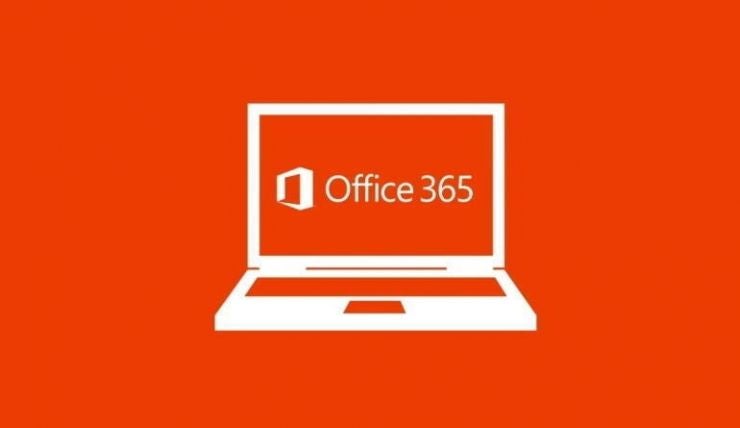
Business, in all its various forms, has always been and will always be a competitive endeavor. Successful business ventures will often look to establish an advantage or some type of edge on the rest of the market. One way to accomplish this task is with superior, or at the very least, less expensive IT infrastructure.
With Microsoft 365 businesses can deploy a complete productivity suite for the entire operation without the usual piecemeal integration of disparate systems and applications. By mixing mixing Windows 11, Windows 10, Office 365 and the Enterprise Mobility and Security package, Microsoft offers a turnkey collaboration and productivity suite that can be implemented quickly and at a low cost, which is just what a business seeking an edge needs.
This cheat sheet about Microsoft 365 covers what you need to know about the suite. We’ll update the guide periodically as new information about the product is released.
SEE: Considering Microsoft 365? What you need to know (TechRepublic Premium)
Executive summary
- What is Microsoft 365? Microsoft 365 combines Windows 11, Windows 10, Office 365 and Enterprise Mobility and Security authentication into one turnkey solution.
- Why does Microsoft 365 matter? With Microsoft 365, SMBs can deploy a mobile, collaborative work environment that is both productive and secure without incurring overwhelming costs, potentially providing a competitive advantage.
- Who does Microsoft 365 affect? SMBs looking to establish a secure, collaborative working environment integrated with mobile devices and a dispersed workforce will benefit from the integrated solution provided by Microsoft 365.
- When was Microsoft 365 released? Microsoft 365 Enterprise is available now. Microsoft 365 Business is available for preview.
- How can I get Microsoft 365? Microsoft 365 Enterprise is available now and can be acquired by contacting a Microsoft Partner or a sales representative. You can sign up for the preview of Microsoft 365 Business.
SEE: All of TechRepublic’s cheat sheets
What is Microsoft 365?
Microsoft 365 is a turnkey suite of integrated collaboration and productivity applications designed to be deployed all at once to save time and resources. SMBs can use Microsoft 365 to deploy IT infrastructure that incorporates desktop and mobile devices, and the security and authentication systems required to keep data safe in a mobile workforce environment.
Microsoft 365 combines features and toolsets from the Windows operating system, the Office 365 productivity suite and the Enterprise Mobility and Security package, which establishes authentication and security protocols for employees and systems to protect data and infiltration by outside influences.
SEE: Microsoft 365: Keyboard shortcuts for Outlook on the web (TechRepublic)
There are two versions of Microsoft 365: Microsoft 365 Business and Microsoft 365 Enterprise. Microsoft 365 Business is designed for SMBs that are looking to deploy an integrated, collaborative work environment but do not have the IT personnel or infrastructure in place to manage it. The Business version will work best with SMBs that do not use an Active Directory domain controller.
Microsoft 365 Enterprise is designed for larger businesses that will integrate the various parts of the suite with already established IT infrastructure. The Enterprise version will work best for enterprises looking to integrate a collaborative working environment with legacy systems.
Comparative features: Office 365 Business Premium and Microsoft 365 Business

Additional resources:
- How to create and use the same Office themes across files in Microsoft 365 (TechRepublic)
- Analysis: Google Workspace or Microsoft 365? (TechRepublic Premium)
Who should use Microsoft 365?
Any SMB looking to establish a secure, collaborative working environment that includes traditional desktop workstations integrated with mobile devices and a dispersed workforce will benefit from the integrated solution provided by Microsoft 365. By combining the operating system (Windows 10), the productivity suite (Office 365) and the authentication system (Enterprise Mobility and Security), along with support from a Microsoft Partner, SMBs can deploy Microsoft 365 quickly and inexpensively. A relatively inexpensive turnkey solution like this could provide the edge a small business needs to succeed in a competitive marketplace.
Additional resources:
- How to download and install Microsoft 365 apps on Mac, iPad or iPhone (TechRepublic)
- How to enable Dark Mode in Microsoft 365 (TechRepublic)
- Checklist: Microsoft 365 app and services deployments on Macs (TechRepublic Premium)
What are the expanded development tools in Microsoft 365?
Part of the appeal of Microsoft 365 is the built-in secure development platform where organizations can create enterprise-specific collaboration tools. In May 2018, Microsoft announced the release of eight new developer tools for Microsoft 365 subscribers. According to the company, these tools will allow developers to “create smarter ways for people to work.”
The eight new developer tools for Microsoft 365 include the following.
- Expanded Microsoft Teams capabilities: Developers can create organization-specific apps for the Teams platform.
- Deeper Teams and SharePoint integration: SharePoint pages can now be pinned directly into Teams channels.
- Extended Power BI visualization in Excel: Allows custom Power BI visuals to be translated and shown in Excel worksheets.
- Updates to the Fluent Design System: The Fluent Design System has been updated to include Universal Windows Platform (UWP) XAML Islands with host controls for WinForms and the Windows Presentation Foundation (WPF).
- Stand-alone .NET environments: Developers will be able to build .NET apps for newer versions of the platform using .NET Core 3.0.
- Improved all-in-one containerization with MSIX: Developers will be able to containerize apps while adding managed security, enterprise management and authenticated access to the Microsoft Store.
- Added machine learning tools to Excel: Azure Machine Learning algorithms and custom JavaScript functions are now available in Excel.
- Educated learning machines: Developers can build and train machine learning models in the cloud with the Windows Machine Learning platform and then deploy them locally, improving overall performance.
Additional resources:
- Microsoft 365 Services Usage Policy (TechRepublic Premium)
- Top 5 Microsoft Office alternatives (TechRepublic)
- Microsoft Excel: Become an expert with this online training (TechRepublic Academy)
Which products compete with Microsoft 365?
Competition for integrated solutions that include an operating system, a productivity suite and a system for authentication of all devices is rather limited.
Alphabet offers a comprehensive productivity suite with web-based authentication based on the Chrome OS called Google Workspace and is considered a primary competitor, although the applications are limited to a browser-based environment. The Google Workspace Business Starter version starts a $6/month per user.
Other competitors to Microsoft 365 include WPS Office, LibreOffice, OpenOffice and Zoho. There are also dozens of other small competitors in the productivity marketplace. Subscription prices for these competitors range from free to much more expensive.
Perhaps the most significant competition for Microsoft 365 comes from Microsoft itself. Many SMBs are willing to make do with Office 365 Business Premium, Windows 10 or Windows 11 and a mishmash of mobile devices with dubious authentication protocols. Overcoming that sort of corporate culture inertia could prove to be the most difficult competitive hurdle for Microsoft 365.
SEE: Security awareness and training policy (TechRepublic Premium)
How can I get Microsoft 365?
Microsoft 365 Enterprise is available now and can be acquired by contacting a Microsoft Partner or a sales representative. Pricing for the Enterprise version will vary depending on what is required for deployment, but the basic Enterprise version (E3) subscription is priced at $36/user/month.
Microsoft 365 Business is available now, and a subscription can be obtained from the official website. A free 30-day trial is available for testing the productivity suite. The Microsoft 365 Business Basic subscription plan is priced at $6/user/month, premium versions will cost more.
Master all things Microsoft 365 with these TechRepublic Academy resources:
